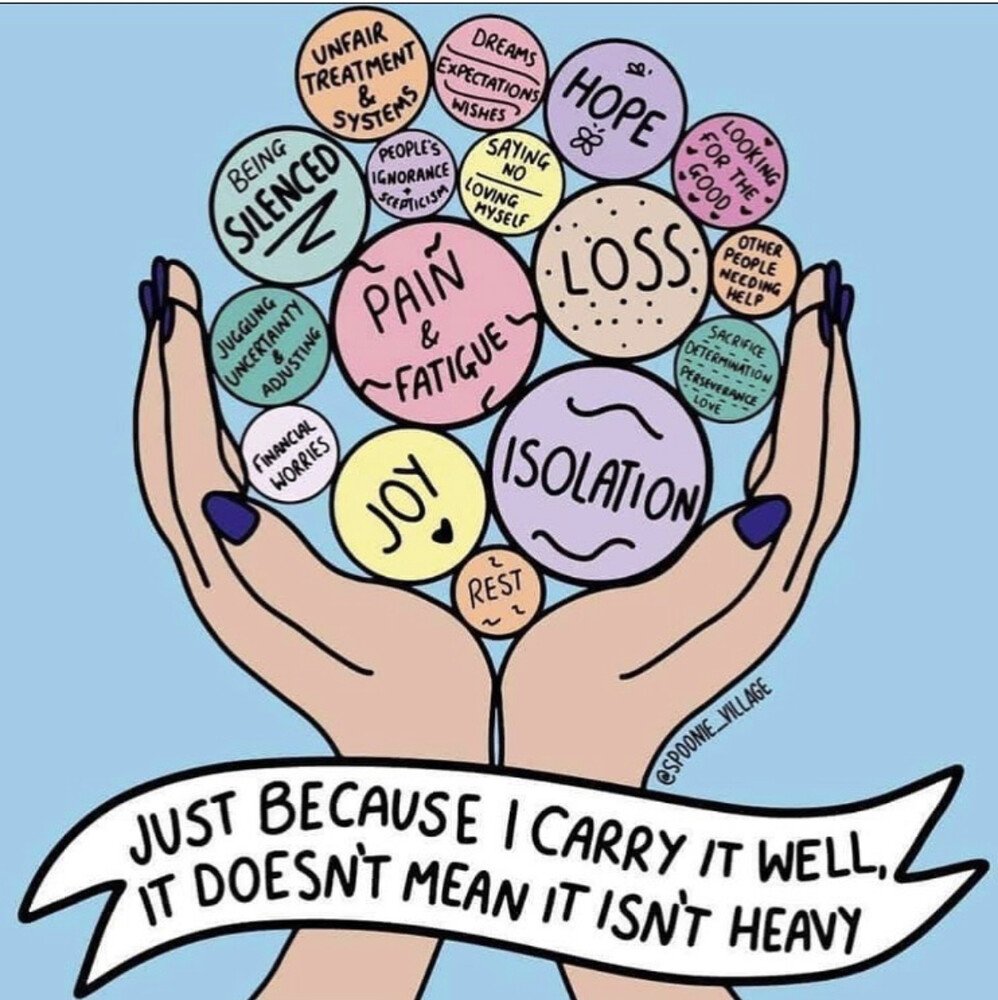Invisible Backpacks: What Are You Carrying?
Do you ever worry that something like that might happen at your school one day?
I've asked my husband, an elementary school teacher, that question several times over the past 15 years as news of more and more school shootings has filled the airwaves.
The thought crossed my mind more than once about whether a disgruntled student or parent might take out their anger at my husband's place of employment. I didn't always express it, but I thought about it.
When I was growing up, we didn't have to worry about such things. We thought about what our next art project was or whether it was 5-cent pretzel stick day or what homework we would have that night.
We didn't wonder whether we'd make it out of the building alive.
And neither did our teachers.
Several years ago, I sat in on a panel at the AICPA Women's Conference, and Dawn Brolin was one of the speakers. She shared a story about a young woman she knew who was a middle schooler at Sandy Hook during the 2012 school shooting.
Years later, that student was a member of the softball team Dawn coached. She struggled to get out of bed each day, and when she was in a classroom, she anticipated someone would barge into the room and start shooting. Dawn said you wouldn't know by looking at that student how much her past haunts her years later and affects how she shows up in the world.
Can you imagine how heavy it must feel for her to carry that weight? What Dawn said next gave me language to communicate what it feels like to have a burden like that:
"Everyone carries an invisible backpack."
Each person in the world is carrying struggles, challenges, fears, traumas, abuse, losses and other weights and burdens that we are not aware of and cannot see.
All of us are carrying invisible backpacks.
But too many of us carry them silently...and alone.
That's why it's more important than ever to offer grace, kindness, love, compassion and forgiveness to ourselves and the people we interact with and be willing to speak up when we're having a hard time.
When we have the courage to be honest about our fears and struggles with people we trust, we catalyze connection through vulnerability. We don't have to carry our backpacks alone.
How to Process Your Sadness (and other emotions)
We've all experienced loss of some kind in the past two years and recently - the loss of familiarity, control, our sense of safety, health, loved ones, freedom, peace, unmet expectations, social interaction, coworkers, income, innocence, trust in people and places.
As a result, we've been feeling on edge - reactive, traumatized and isolated.
Tragic moments, like what happened at the elementary school in Uvalde, Texas, can send us further down an emotional spiral of despair, grief, anger, sadness and numbness. It makes sense that we're sad and angry or emotionally checked out.
Those emotions are part of our natural response to change.
But most of us don't give ourselves space or permission to grieve. We try to "hold it together" when we feel like we're falling apart, and we continue carrying increasingly heavy backpacks alone.
As I reflect on the grief, losses and traumas I've experienced in the past two years, this is what I've come to realize:
When we give space to our sadness instead of suppressing it, we can begin to heal.
Allow yourself to experience the range of emotions that are flowing through you right now. Try not to label them as "good" or "bad" or judge yourself for feeling them.
Maybe talking to a friend or family member you trust or journaling about it would be helpful. Here's a practice and process I learned to do from Dr. Sam Qurashi. He talked about it on my LinkedIn Live show on May 23rd.
Grab a journal and write down the prompt, "When I think about X (a triggering event), I can feel..." and then repeat that "I can feel..." statement, filling in different emotions until you exhaust all of the emotions and feelings you can think of. For instance, "When I think about the school shooting in Texas, I can feel angry. I can feel enraged. I can feel sad. I can feel heavy. I can feel unsettled., etc."
Keep probing yourself to uncover deeper feelings. Ask, "And what else do I feel?" Use the feelings wheel below if you need ideas for more nuanced emotions.
Once you're finished doing that, take 7-10 exaggerated breaths in rapid succession - in through the nose, out and forced through the mouth. This process helps you process and dissolve the charge of your emotions.
The Bottom Line
All emotions need a voice.
They need to be unmuted, not numbed or pushed aside.
Because what we don't feel, we can't heal.
In the midst of grief and loss, give space to your sadness.
Let yourself feel it. If you find that you can't pull yourself out of it, seek the support of a therapist or spiritual advisor. I'm a big advocate of therapy as a way to support our mental, emotional, physical and relational health.
Reach out to your friends, coworkers or family members. When we're feeling the heaviness of a time of grief, we need community more than ever.
All we can do is keep showing up each day, taking one step at a time, moving forward and giving ourselves permission to feel along the way. I'm choosing to allow myself to feel the sadness when it passes through me and to give myself equal opportunity to take in moments of joy and lightness and goodness. We need both.
It's okay to be wherever you are right now.
Your Thoughts
I always love hearing from you. Feel free to share your thoughts in the comments below:
What resonated with you from this post?
What helps you when you're experiencing sadness?
We can learn so much from each other and, now more than ever, need to continue to support, love and hold space for one another.
❤️
Additional Resources
I shared my favorite book on trauma processing in a recent post on here and linked several other books in the comments thread. Feel free to DM me with any questions.
If you want to learn more about how I support organizations, leaders and their teams build resilience, connection, and compassion through virtual and in-person learning and training experiences, go here or send me a message.


